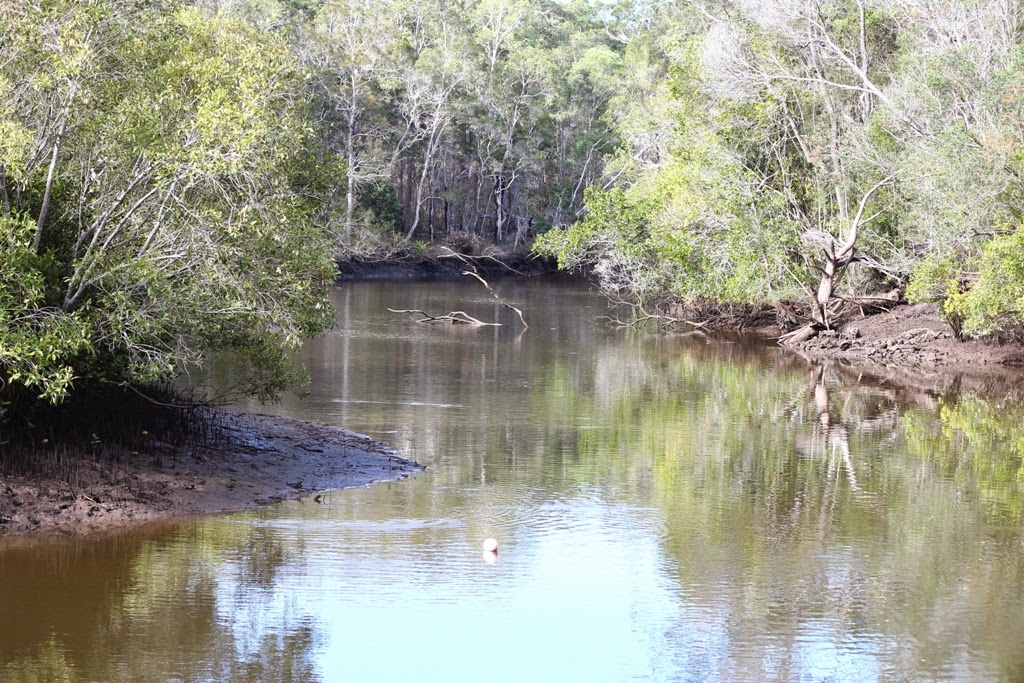 |
| Mooloolah River |
While looking on Goggle Earth recently, we discovered that there was an interesting looking trail from near the Kawana Soccerfields to the banks of the Mooloolah River. We parked our car at the western end of Main Drive in Warana, near an information board about the Mooloolah River Floodplain walk. To our surprise, we discovered an elevated concrete walkway which goes for 2 km through wetland to the Mooloolah River.
| Elevated Concrete Walkway |
There was a variety of butterflies, lizards and dragonflies alongside the walkway.
 |
| Wall Skink Cryptoblepharus virgatus |
By walking as quietly as we could we were able to observe a large number of small crabs in the floodplain below the walkway. The only ones we know are the Red-fingered Marsh Crabs. Their name always amuses us because it completely ignores the fact that these crabs a such a lovely green. We were particularly taken by the appearance of the two-tone black and white crabs.
.jpg) |
| Red-fingered Marsh Crab Parasesarma erythodactyla |
.jpg) |
| Semaphore Crab Heloecius cordiformis |
Near the bank of the river, we observed a pair of Whistlers. The adult male Whistler looked different to any Golden Whistler that we have ever seen because the throat area wasn't white; it was more of a speckled grey, and the neck and chest area was a deep orange-yellow. The other whistler had more green and russet colouring than we have observed before. Unfortunately, the light wasn't ideal for photography by this time but we hope the photos show what we mean. Perhaps they were Mangrove Whistlers?
We would be very pleased if our readers could let us know what these crabs and any of the unlabelled photos are. Any thoughts on the Whistlers would also be appreciated.
Note added in March 2015: We have since discovered that Mangrove Whistlers don't come this far south so these photos are of Golden Whistlers. Greg Roberts who, amongst other things, writes the excellent blog at http://sunshinecoastbirds.blogspot.com.au/
has let me know that he has also seen Golden Whistlers that look like these on the Sunshine Coast.
.jpg)


_collage.jpg)
_collage.jpg)

_collage.jpg)


_collage.jpg)

_collage.jpg)

